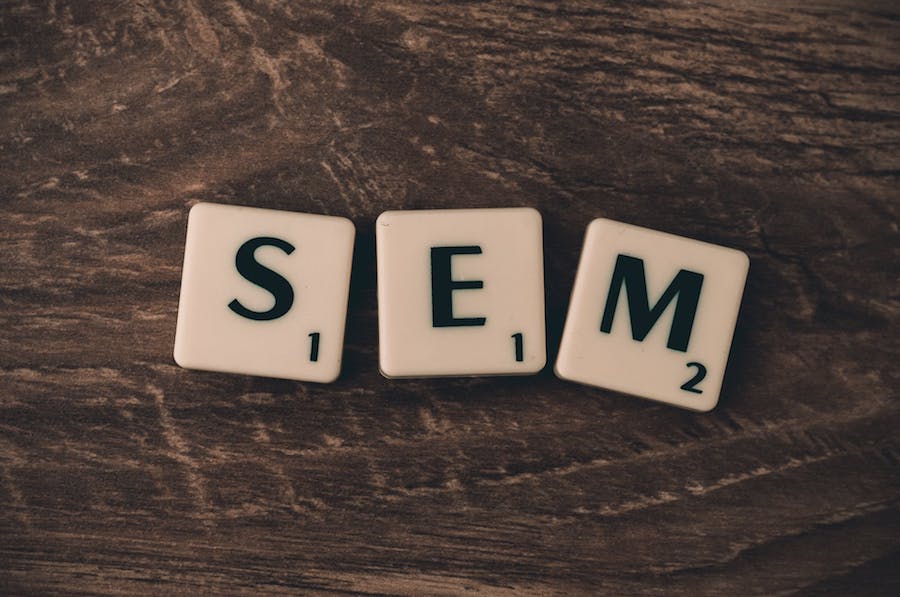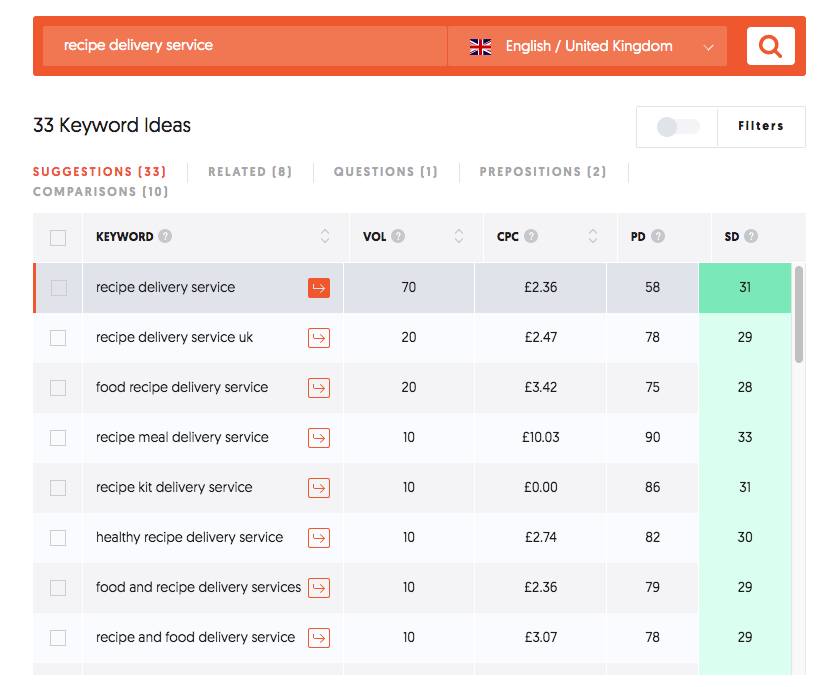5 min to read
Want to increase sales for your subscription box company? You've come to the right place.
Driving high quality website traffic is critical for businesses in the digital age, and even more so if your brand relies on a direct to consumer (D2C) model like most subscription businesses.
If you are selling directly to customers, then your website is essentially your digital storefront. But you can't expect eager customers to show up just because you've opened up shop- it's your job to make it easy as possible for customers to find you, and buy from you.
What is a search engine marketing strategy?
If you want to find more information about a product or service, chances are, you Google it.
To no surprise, your target customers are doing exactly the same thing.
Having a high level of visibility on search engines is no longer a nice-to-have, but a need-to-have.
Search engine marketing (SEM) is essentially the process of increasing your visibility and getting these search engines to work in your favor. Search Engine Marketing breaks down into two sub-disciplines: Search Engine Optimization (SEO) and Search Engine Advertising (SEA).

What is the difference between SEO and SEA?
In simple terms, Search Engine Optimization is the processes and techniques that help your website show up at the top of the Search Engine Results Page (SERP) organically for certain search terms.
However, getting your website to show up at the top of the SERP is not as simple as stuffing keywords on the pages of your website. Sure, having a keyword optimized website is important, but Google's Ranking Factors (or the criteria that the Google Algorithm uses to decide the rank of a webpage) also include things like backlink profile, domain authority, website speed, mobile usability, and more. Additionally, it can take anywhere from several months to a year to start indexing on the first page of Google, which is why many people choose to compliment their SEO efforts with SEA.
Search Engine Advertising is also a technique for getting your website to appear at the top of Search Engines for specific terms, but unlike SEO, doesn't involve a long waiting period.
SEA (also called Paid Search or PPC) is exactly what is sounds like- paying to show up first on the SERP. However, there are also a lot of other people competing for this prime real estate, so it's not as simple as setting up a campaign and watching the sales roll in. Additionally, some keywords can be very expensive, so it's not always financially feasible to be the first result.
TL;DR- SEO is "organic" or free, SEA is paid. SEO takes longer to show up on the top of the page, SEA is immediate. However, the most effective Search Engine Marketing strategies incorporate both techniques.
How can you use SEM to drive more subscription box sales? Here are 3 tips to get you started.
TIP #1 – Focus on "Top of the Funnel" Keywords for SEO
Every customer travels through a Conversion Funnel.
At the top of this funnel, people are in the Awareness phase. Awareness level users are considered "problem-aware," meaning they have a problem that your solution fixes, but they not aware or your solution yet.
People in this stage will search for broader keywords that may not be directly related to your product or service.
Let's say you have a recipe delivery subscription service, and your target customer is busy, working parents who want to prepare home-cooked meals for their families but don't have a lot of time.
To impact users in this stage of their customer journey, you can create content focused on these broader, long-tail keywords such as:
- "Healthy weeknight recipes"
- "Family friendly meal ideas"
- "Affordable dinner recipes for large families"
These keywords will have less competition, and will therefore be easier to rank for. Targeting the top of the funnel will also help you reach users who may not have found you otherwise.
How do you find these keywords? Check out this article.
TIP #2 – Focus on "Bottom of the Funnel" Keywords for SEA campaigns:
Maximize your media budget by focusing on "Bottom of the Funnel" keywords in your SEA campaigns. Here's why.
Paid Search campaigns work on a pay-per-click model, meaning you only pay when someone actually clicks on the ad through to your website. The cost-per-click (CPC) for each keyword can vary greatly depending on your brand's industry and target location.
Below you can see the CPC breakdown for keywords related to "Recipe Delivery Service" in the UK from Neil Patel's free keyword research tool, Ubersuggest.

To the untrained eye, these keywords don't look too expensive. But, when you do the math, you can see that these clicks starts adding up quickly.
Think about it: an average website has a conversion rate between 1-2%. This means that for every 100 website visitors, you will get 1-2 people who actually convert into leads or customers. If you're paying an average of £2.50 per click to your website, then it will cost you £250 to bring 100 users to the website. If only one of those users converts, then you have a Cost per Acquisition of £250. Depending on your Average Customer Lifetime Value, this may not be profitable for your business.
For a lot of brands, especially Subscription Box startups, you can't afford to pay for clicks that may not translate to actual sales.
But, if you only target on keywords that are at the bottom of the funnel, then you can optimize your budget for conversions, not clicks. Focus on keywords that show a high level of intention, such as:
- "Sign Up for Recipe Delivery Service"
- "Buy Gift Card for Recipe Delivery Service"
- "Recipe Delivery Service Promo Code"
Want more Paid Search tips? Check out this article.
TIP #3 – Make sure your website is optimized for mobile devices:
As of 2019, over 60% of all searches on Google were performed on a mobile device, which means that the majority of people who find your website will have done so using their Android or iPhones.
Having a website that's optimized for mobile is crucial for the user experience. According to Google, 53% of internet users leave a mobile web page if it takes more than 3 second to load. So, if your website doesn't load within 3 seconds on a smartphone, you've reduced your chances of conversion by more than half.
But having a well performing mobile page is important even before a user arrives to your site.
Google prioritizes websites with high mobile usability when displaying organic results, so this is will actually help with your SEO. Additionally, there are certain Paid Ad formats that are only available for mobile devices.
So, if you have a mobile optimized site, you have more access to the SERP. More visibility on the SERP means more potential clicks and sales.
Want to test your site's mobile load time? Check out this tool.
Ready to increase your subscription box sales?
These tips are intended to help you think strategically about your Search Engine Marketing. However, there are a lot of other digital marketing techniques that can be used to improve your subscription box sales and retention rates.
Codedesign is a digital marketing agency specializing in data-driven online sales and lead generation solutions for brands in a variety of verticals. Contact us to schedule a consultation with one of our digital marketing experts.



Add comment ×